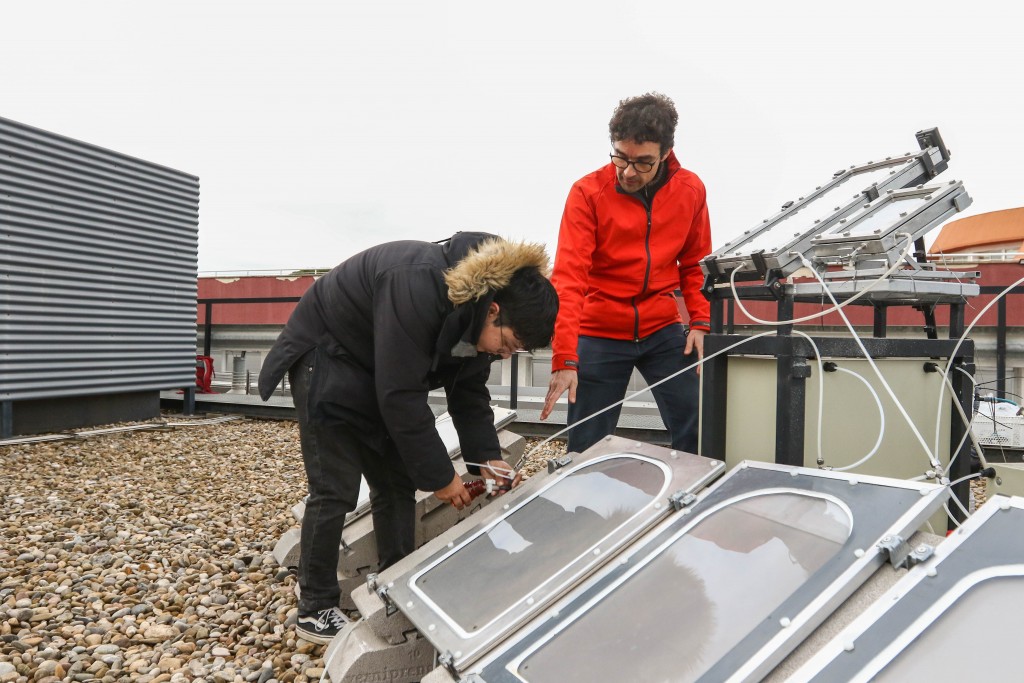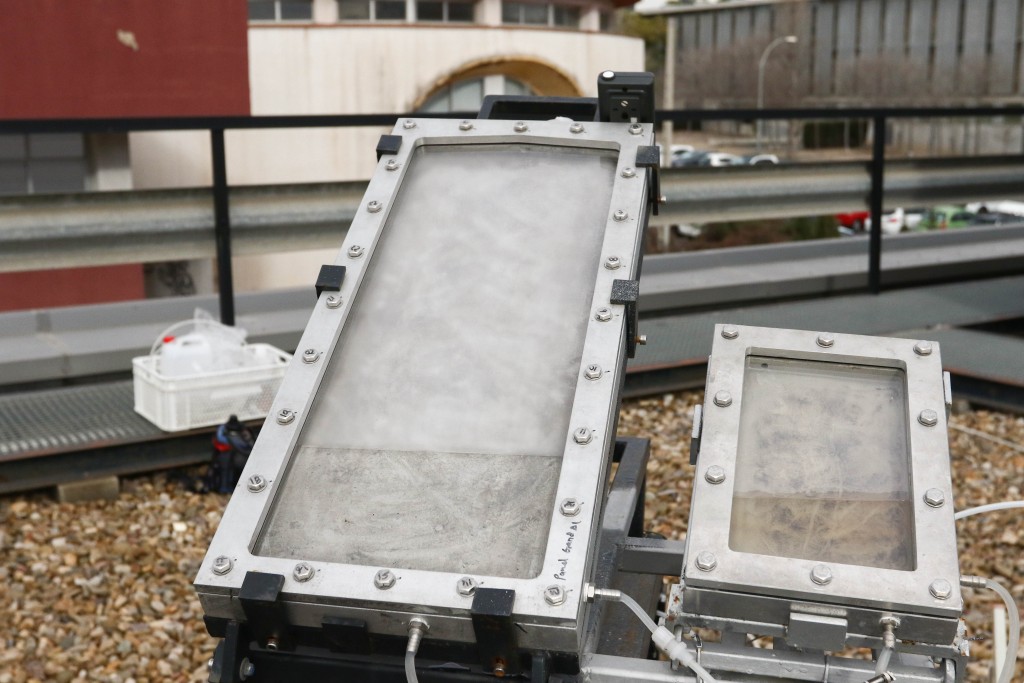17/01/2024
Technology developed to generate hydrogen from wastewater with solar radiation
Using URV research findings, the HACDOS project has validated an experimental pilot plant and is now preparing an industrial-scale plant to consolidate a viable and profitable circular energy model

Using URV research findings, the HACDOS project has validated an experimental pilot plant and is now preparing an industrial-scale plant to consolidate a viable and profitable circular energy model
Economical, affordable, green, decontaminating and scalable. These are the features of the technology that generates renewable hydrogen from wastewater by simply using solar radiation and which is being developed by researchers from the URV’s Department of Chemical Engineering. The project is known as HACDOS, and the participating companies are Facsa, which specializes in the water cycle and is the project coordinator, the Eurecat Technology Centre and Enagás. These companies form a consortium that will evaluate the possibility of setting up a spin-off company. In parallel, a patent has been registered and plans are now in place to extend it to other countries.
The roof of one of the buildings on the URV’s Sescelades Campus houses the pilot plant of the project, which is currently being validated. Alberto Puga, one of the URV researchers explains how it works: “We have solar panels with an active photocatalytic material through which the wastewater is passed. When it is hit by sunlight, the water decomposes, so we manage to eliminate pollutants and produce hydrogen, which is clean because it has come from a renewable source.”
Another of the project’s researchers, Kevin Simbaña, says that one of the advantages of this technology over others based on electrolysers is that it does not require an electrical system, so there is no need for a large investment and there is no risk of damage when it comes into contact with water. “It does not need large energy inputs and the plant can treat both urban wastewater and wastewater from a variety of industries,” says Simbaña, who adds that the plant requires little space and is flexible in terms of location. Likewise, the connection system is quite simple: it uses pipes and no electricity other than the devices that control the installation, basically those that measure solar radiation.

This small-scale pilot plant is used by the researchers to carry out tests, “to see how it works, how it responds to radiation in different climatic conditions and at different levels of pollution, to find ways to solve the small problems that arise, to maximize efficiency, etc. In other words, to find out how it can be replicated on a larger scale,” explains Alberto Puga. The next phase of the project, which is already underway, is to manufacture a plant on an industrial scale. The larger-scale pilot plants will be located at the Granollers wastewater treatment plant (WWTP), operated by the joint venture Facsa-Transparenta and owned by the Besòs-Tordera consortium.
The objective of the project, financed by the Next Generation EU funds and by the State Research Agency of the Ministry of Science and Innovation (Project CPP2021-008619, financed by MCIN/AEI /10. 13039/501100011033 and by the European Union NextGenerationEU/ PRTR), is to consolidate this circular energy model based on affordable solar photocatalysis as a real option for exploiting wastewater to produce green hydrogen, which is technologically feasible in various industries and scenarios and economically profitable. The HACDOS project has been given several awards, including the Emprèn 2022 prize from the Tarragona Provincial Council and the R2B2022 grants organised by the URV to promote technology transfer, and was a finalist in the EmErgEnt awards of the Efficient Energy Cluster of Catalonia.
https://www.youtube.com/watch?v=-ZNFRbCHQwE
